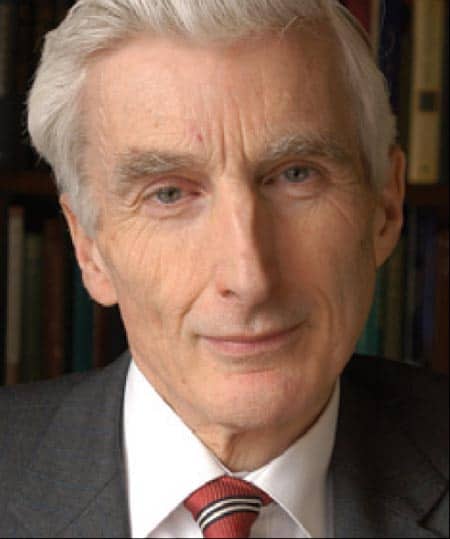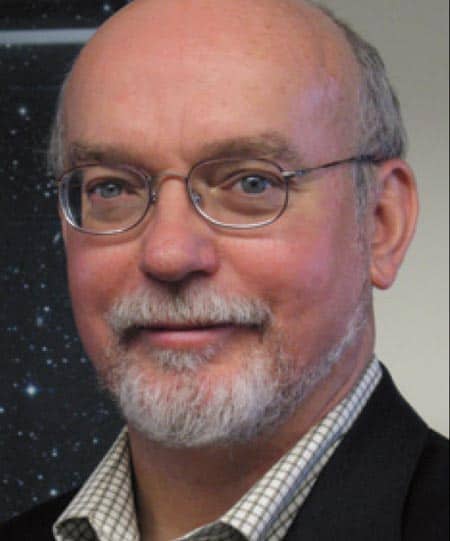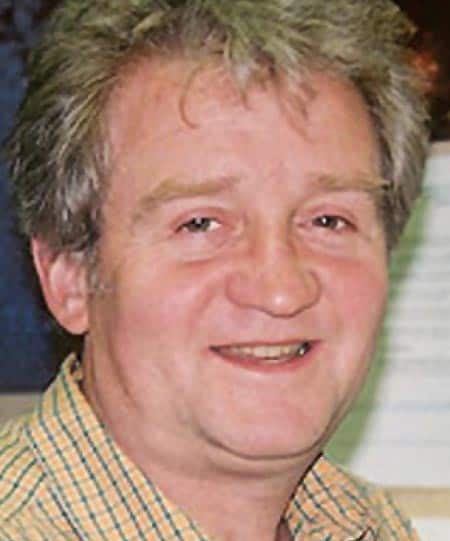With the International Year of Astronomy now in full swing, leading figures from the world of astronomy reveal what they think are the biggest challenges for the subject
Catherine Cesarsky is president of the International Astronomical Union
The International Year of Astronomy (IYA2009) is a global celebration of astronomy and its contribution to scientific development and cultural enrichment. Now, 400 years after Galileo Galilei first glimpsed the heavens through a telescope, astronomy is in the midst of a golden age. Taking advantage of the fantastic progress of technology, astronomers are exploring a solar system whose inner workings Galileo and Kepler started to unravel in 1609. For us, the universe is now an open book that we can read using telescopes on the ground and robotic probes in space. Using our instruments as “time machines”, we can peer back across history and see galaxies as they were when the universe was less than 10% of its present age. We have also confirmed the existence of other solar systems in our galaxy.
It is this sense of discovery and awe that astronomers wish to share with our fellow citizens all over the world. We thus hope to stimulate a long-term increase in student enrolment in science and technology, and an appreciation for lifelong learning.
But despite the continued string of successes in astronomy, significant challenges remain. While we have been able to determine with unprecedented accuracy the parameters that define the geometry, dynamics, history and contents of the universe, we know almost nothing of what could make up 96% of it. We hide our ignorance behind the terms “dark matter” and “dark energy”, and indeed our skill at modelling the structure of the universe and its variation with time with “cold dark matter” makes us sometimes feel that we have conquered it. It is more difficult to get to grips with dark energy, which is causing the expansion of the universe to accelerate. All we know now can be made to fit using the cosmological constant that Einstein introduced; a satisfactory mathematical solution is then obtained, but the physics is not understood.
It is likely that dark matter and dark energy will open the door to new physics, leading to the discovery of new particles and fields and/or forcing us to modify our understanding of gravitation beyond Einstein’s general theory of relativity. We should gain new insights through more detailed observations of the fossil radiation from the Big Bang using the Planck satellite, developed by the European Space Agency (ESA), which is due to take off next month, and by studying the evolution of the universe’s structure with the next generation of satellites such as ESA’s proposed EUCLID project and NASA’s planned Joint Dark Energy Mission. We may need a new Einstein to make sense of all the new results and to come up with a convincing solution.
The other fascinating challenge of 21stcentury astronomy is finding life on another Earth. Over 330 planets orbiting other stars have already been found, some of them super-Earths about 3 to 10 times more massive than our planet; one of them, recently discovered by France’s CoRoT satellite, orbits a star similar to our own. Prospects for progress are excellent, with the Kepler satellite to be launched this month, the European Extremely Large Telescope (E-ELT) and numerous advanced space missions being planned. But I anticipate that, when the time comes, the “proof of life” will be elusive and controversial for quite some time.
Martin Rees is at the University of Cambridge in the UK and holds the title of Astronomer Royal
A quarter of a century ago, plans for the Hubble Space Telescope and the Keck telescopes were well advanced, and both these instruments are still doing great science. If we look 25 years ahead, the projects that are now at the concept or planning stage will be the major instruments then. The timescale is very long — depressingly so. However, we can be optimistic that rapid advances in computer power will allow realistic modelling of how galaxies, stars and planets formed. Simulations in “virtual universes” will play an ever larger role in our subject.
I would highlight three main challenges for astronomy. The first concerns black holes. These are now recognized as the engines for active galactic nuclei. But we still do not know if they obey the “Kerr metric”, which describes the geometry of space–time around a massive rotating body, although I would be astonished if they did not, given the vindication of general relativity. I am hopeful for better probes (and simulations) of flow patterns and magnetic effects in the innermost regions of active galaxies, plus the direct detection of gravitational waves from coalescing black holes.
At the moment, direct observations of quasars and galaxies do not get us much beyond redshifts of six, corresponding to an era around a billion years after the Big Bang. But there are strong reasons to suspect that the “dark ages” ended and the first stars formed at a much higher redshift still — perhaps only 200 million years after the Big Bang. It is still uncertain, however, what the first stars are like, and how many of them were formed. Some of the answers must wait for the James Webb Space Telescope, which is set for launch in 2013, or the next generation of giant ground-based telescopes. If we are lucky, it may turn out that some of the earliest stars end their lives as ultra-luminous gamma-ray bursts, which could be detected with current instruments at redshifts well beyond 10.
If we cannot find discrete objects at these ultra-high redshifts, then the best hope of mapping how the primordial gas got heated and ionized may be to detect the emission of light with a wavelength of 21 cm from the neutral state of hydrogen. It is a very weak signal compared with other radio backgrounds, but because hydrogen emits a line not a continuum, one can do 3D mapping or “tomography” of this substance. Major instrument arrays, including the Square Kilometer Array (SKA), which will be built in either Australia or southern Africa, will advance this area of research. We also await theoretical progress to pin down the physics of the ultra-early universe in a similar way that the physics of the nucleosynthesis era was pinned down 40 years ago.
Much closer to home — within the local spiral arm of our own galaxy — lies an equally exciting challenge: to find and study planets orbiting nearby stars. In the coming decades, huge numbers of planets will surely be found. The Kepler spacecraft should give direct evidence of how many Earth-like planets there are. Perhaps some are “twins” of our Earths that harbour life far more interesting than even the optimists hope to find on Mars or Titan. Exobiology and the study of life’s origins on Earth will surge forward.
Tim de Zeeuw is director-general of the European Southern Observatory
As we celebrate the revolutionary impact of the invention of the telescope 400 years ago, we find ourselves poised to make another giant leap forward. Proposed by the European Southern Observatory (ESO), the E-ELT, with a 42 m diameter primary mirror consisting of nearly 1000 segments, would be the world’s biggest eye on the sky. By jumping beyond the current generation of 8 m telescopes, the E-ELT would, if built, be a leap as large as that made by Galileo when going from the naked eye to the first telescope.
Technological developments now make it possible to observe planets orbiting other stars, peer deeper than ever into the universe, use particles and gravitational waves to study celestial sources, and to carry out in situ exploration of objects in our solar system. This promises tremendous progress towards answering key astronomical questions such as the nature of dark matter and dark energy, the formation and evolution of galaxies from first light to the present day, and the direct observation of Earth-like planets. These are among the most fundamental questions in science and are of enormous interest to the general public.
Astronomers are already drawing up a whole range of next-generation facilities, including extremely large telescopes working at optical and infrared wavelengths, survey telescopes that would provide deep imaging of the sky every few nights, as well as experiments to detect particles and gravitational waves, and space missions devoted to characterizing extrasolar planets. Turning these proposed new facilities from a dream to reality will require substantial investments by national and international funding agencies, as well as, in some cases, private donors. The US has a long tradition of prioritizing such plans through the series of “decadal surveys” initiated in the 1960s, and more recently the European ASTRONET consortium has developed a long-term strategic plan for European astronomy that promotes the best use of existing and future facilities such as the Atacama Large Millimetre Array (ALMA), the E-ELT and later SKA.
Building the flagship astronomical facilities of the future will present substantial technological and organizational challenges. It will provide opportunities to showcase industry’s capabilities, but it also requires strong and effective management. The experience of the astronomical community in international co-operation has paved the way for global projects such as ALMA, which involves strong institutions from three continents with very different funding systems operating a single facility in a remote location in Chile. The endeavour is challenging, but success will bode well for future global facilities.
Notwithstanding the current economic climate, these new facilities will take so long to plan and build that we need to follow up our long-range plan for European astronomy and similar efforts elsewhere, including the ongoing US decadal survey. If we can make these marvellous facilities a reality, then we can take the next step in our understanding of the universe.
John Huchra is at the Harvard-Smithsonian Center for Astrophysics and is president of the American Astronomical Society
Astronomers have made some phenomenal discoveries over the last two decades, including detecting and imaging extrasolar planets, analysing extraterrestrial materials samples and realizing that the expansion of the universe is speeding up rather than slowing down. Yet there is still much we do not know or understand, and even, in the immortal words of former US Secretary of Defense Donald Rumsfeld, “unknown unknowns”. I think that the greatest challenges for astronomy are still the cosmological ones. What is dark energy? What is dark matter? And how do these really affect the formation and evolution of the universe and its contents?
We may find the answers, or at least vital clues, within days, weeks or months. Or it may take decades to directly detect and characterize the dark stuff that makes up 96% of the contents of the universe. We may also have the wrong cosmological model and have to start all over again when new evidence yet again transforms our world view. I have now lived through two such cosmological paradigm shifts — first when we were debating the Big Bang versus the steady-state model, and then when we had become thoroughly convinced it was completely filled with mostly cold dark matter — and I would not be surprised if I saw another.
Closer to home and perhaps closer to fruition are the challenges of finding and characterizing extrasolar Earth-like planets, detecting the gravitational waves predicted by Einstein’s general theory of relativity, and discovering the first stars formed after the Big Bang. These are all within the reach of astronomers in the next decade through the march of technology: large ground and space-based interferometers; the James Webb Space Telescope; and perhaps the LIGO and VIRGO gravitational-wave observatories.
We have also entered the era of time-domain astronomy, which allows us to look for ultrafast variable stars and other objects that until now have only been theorized about. X-ray and gamma-ray telescopes have been monitoring the sky for decades, but it is only recently that the sky has been surveyed repeatedly at optical wavelengths. Such “synoptic” surveys have been responsible for detecting gravitational microlenses, nearby supernovae, a horde of extrasolar planets, and a few of the killer rocks in space that could wipe out civilization if not detected and mitigated in time. The next decade promises to bring many additional surprises just from looking hard at the sky over and over again to watch for changes with time.
The final challenge for astronomers is not scientific but sociological. The age of the lone astronomer with his or her telescope or computer is being replaced by an era in which the remaining problems are so complex that they require teams of experts with different fortes using facilities that are so large and expensive that they require international co-operation on a grand scale. To paraphrase a colleague of mine — the astronomer Penny Sackett, who is now the chief scientist of Australia — we need to learn to succeed and not just to win. That is a hard challenge not only for astronomers but also for the whole human race.
Andrew Fabian is at the University of Cambridge in the UK and is president of the Royal Astronomical Society
The past decade has brought many exciting new discoveries that reveal much about our universe: from extrasolar planets to the dwarf planets of our own solar system; from the symbiosis of black holes and its host galaxy, to a cosmological driving force — dark energy — that inhabits the largest voids of space. But all new observations bring fresh challenges. For example, something as simple as the exact composition of the universe remains undetermined. We may have deduced the presence and relative importance of three major constituents — ordinary baryonic matter, dark matter and dark energy — but so far we only have a coherent understanding of the first of these.
What makes up dark matter and dark energy is still unknown. Dark matter can be detected only through its gravitational interaction, and dark energy is inferred from the accelerated expansion of space. There are plenty of speculative papers on the nature and origin of both, but little in the way of firm conclusions.
A major challenge for both theoretical and observational astronomy is to search for properties that can better characterize the behaviour of each dark component that will enable us to crack them open. Is all dark matter identical or does it come in different “flavours” like ordinary matter? How is the current era of accelerated expansion connected to the phase early in the life of the universe when it rapidly inflated from the microscopic to the astronomic in size? Can we find any fossil evidence for the first inflation phase, for example from the polarization of the cosmic microwave background? How much progress can we make in cosmology beyond the realm of the observational, without it becoming pure speculation?
Black holes — both the stellar-sized and the supermassive — are routinely monitored and modelled. Yet do we really know how they work? Is Kerr’s solution — based on general relativity — the correct description of spinning black holes? It seems clear that matter falling into black holes — the process of accretion — is responsible for their growth and provides many of the universe’s most energetic phenomena such as active galaxies, quasars and gamma-ray bursts. We probably have the basic “energetics” right but a lot of the details of how they work, such as how they make powerful relativistic outflows, remains unclear. We have discovered that a central massive black hole appears to control the final mass of its host galaxy, but how exactly does this mechanism work, given the very different scales on which the two operate? Much of the complexity seen within and between galaxies is due to gas processes and physics — the gastrophysics, if you like. Dissecting and simulating this in detail is, and will long remain, very challenging.
We now know of over 330 planets orbiting other stars in our galaxy, although nearly all of them are more than a hundred times more massive than the Earth and many are located much closer to their host sun. There is little doubt that finding objects of Earth mass, in habitable zones round other stars, is the next exciting goal. Both this and the current developments in the exploration of planets within our own solar system, such as Mars and Titan (Saturn’s largest moon), can inform the natural speculation about the occurrence and propensity of planets hosting extraterrestrial life. Is it common or rare? What spectral signatures could we search for in the atmosphere of the host planet? And what of multicellular life?
Astronomy presents many challenges beyond just those mentioned so far. There is no single experimental facility that can respond to all the new objects and processes that will continue to be discovered over the next decade. Thus the final challenge for astronomers will be to co-operate and secure the funding for the range of telescopes and instruments required.
Seok Jae Park is president of the Korea Astronomy and Space Science Institute
The greatest challenge for astronomy is international collaboration, because building big and expensive telescopes can no longer be accomplished by a single country alone. Such co-operation is particularly important for a country like South Korea, which is a relatively small player in astronomy, having invested very little in the field since the end of the Second World War. Indeed, until last year, the country had only a 1.8 m optical telescope and a 14 m radio telescope.
The Korea Astronomy and Space Science Institute (KASI) was set up in 1974 to not only analyse and understand the universe through observations but also to spread knowledge of astronomy nationwide. KASI has, for example, been working on the Korean VLBI Network (KVN) project (see Physics World January p9, print edition only), which consists of three 21 m radio telescopes that were just completed last year. While working on the project, it proved vital for Korean astronomers to co-operate with their colleagues in Japan as the KVN is similar to the four 21 m radio telescopes that make up the VLBI Exploration of Radio Astrometry (VERA) facility in Japan.
Collaboration is also crucial in optical astronomy. My institute has joined the Giant Magellan Telescope project, for which KASI has already managed to obtain the funding from the Korean government. The GMT is a next-generation 25 m extremely large telescope founded by six US and two Australian institutions. It is my hope that IYA2009 will enable astronomers from around the world to create a new tradition of co-operation in astronomy. I look forward to the many great achievements that this will bring.
Richard Ellis is at the California Institute of Technology and a former director of Caltech Optical Observatories
Astronomers face many challenges in the next decade including maintaining funds for young scientists and leading facilities during the economic downturn, inspiring activities in the developing world, and improving international cooperation even between well established communities. But, as far as science is concerned, understanding why the universe is accelerating is surely one of the most important puzzles. “Dark energy” — a new property of the vacuum invented to explain this result — may simply be an illusion. The equations used to derive cosmic expansion are based on Einstein’s laws of gravity and it is possible that these may have to be modified.
Regardless of the origin of dark energy, by making further investigations we stand to learn something physically fundamental about the universe. But because there is no agreed theory to test, it is hard to design the optimum experiment. More precise measures of distant supernovae, tracing the growth of dark matter clustering with time, and tracking features in the large-scale distribution of galaxies have been proposed as methods for exploring dark energy using ambitious telescopes dedicated to the task, such as ESA’s Euclid mission and the Joint Dark Energy Mission, co-sponsored by NASA and the US Department of Energy.
Because it is hard to be sure what these missions may find, some have questioned the logic of investing up to $1bn when there is no guaranteed outcome — or, as national funding agencies like to say, there is no clear “deliverable”. In my opinion, this is only a minor risk and one that we often have to accept when studying any worthwhile scientific frontier. With careful design, dark energy missions will generate unique ancillary data for studies of faint galaxies, and transient and moving objects of many kinds.
A further challenge is understanding how and when the very first galaxies emerged from the so-called “Dark Ages” — the period about 300,000 years after the Big Bang when the universe was cool enough for electrons and protons to bind together. Our largest ground-based telescopes have probed galaxies back to a time when the universe was only 5% of its present age, or 700 million years old, and have found that such systems are much smaller and less massive than the Milky Way. Yet most are forming young stars at a prodigious rate. This suggests that we are approaching the era when the first stellar systems formed from dark clouds of molecular hydrogen. Determining the demographics of this primordial population is important since this era was when present-day galaxies first assembled and completes our quest for a complete picture of galaxy formation and evolution.
How can we be sure when we have found a “first generation” stellar system? A clue would be to find stars containing no traces of the heavier elements produced by stellar nucleosynthesis, as only helium and a few other light elements were synthesized in the Big Bang. Characterizing the composition of an early galaxy will require securing its spectrum so that its constituent chemical elements can be identified. This will be a major challenge when one considers that the likely sources are fainter than those currently being imaged with the Hubble Space Telescope and 8–10 m ground-based telescopes. Depending on when this “cosmic dawn” occurred, and the distribution of luminosities and masses involved, we may see the first results from this exciting quest when the James Webb Space Telescope is launched in 2013, or when the next generation of 30 m class giant telescopes are completed a few years later.










